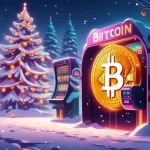Cardano and Mutuum Finance: Viable Solana Alternatives for Your Crypto Portfolio?

Cardano and Mutuum Finance: Are These Solana Alternatives Worth Your Crypto Portfolio?
Bitcoin remains the undisputed king of crypto, but for those who missed Solana’s (SOL) explosive growth and are itching for the next big altcoin play, the market is buzzing with options. Two names, Cardano (ADA) and Mutuum Finance (MUTM), have surfaced as potential contenders for investors chasing high returns. Let’s strip away the glitter and dive into whether these projects offer real value—or just another dose of hype in a space already drowning in it.
- Cardano (ADA): A battle-tested Layer-1 blockchain with over 2,000 projects, robust staking activity, and price momentum around $0.81, fueled by tech upgrades and regulatory potential.
- Mutuum Finance (MUTM): A presale project claiming $12.9 million raised from nearly 14,000 investors, pitching lending utility and security, but lacking hard evidence to back it up.
- Critical Take: ADA shows tangible traction, while MUTM smells like a gamble—let’s unpack the promise and the pitfalls.
Cardano (ADA): A Proven Contender with Growing Pains
Cardano has long positioned itself as a cerebral alternative to flashier blockchains like Ethereum and Solana. Built on a research-driven approach, it’s a Layer-1 blockchain—meaning it’s a foundational network where decentralized apps (dApps) and transactions live directly, without relying on another chain. Trading at roughly $0.81 as of the latest data (with a market cap of $29.4 billion), ADA’s ecosystem isn’t just talk. Over 2,000 projects are building on it, spanning decentralized finance (DeFi), NFTs, and more. Its network has processed over 111 million transactions and boasts 1.33 million staking wallets—users locking up their ADA to help secure the blockchain and earn rewards, akin to a crypto savings account with a mission. Daily transaction volumes exceed $111 million, a sign of real usage, not just speculation.
For the uninitiated, staking is a core feature of Cardano’s proof-of-stake consensus mechanism. Unlike Bitcoin’s energy-hungry mining, Cardano users “stake” their coins to validate transactions and maintain network security, earning passive income (often around 4-5% annually). Imagine parking $1,000 in ADA and watching it grow while supporting a network that hasn’t had downtime in over seven years. Sounds neat, right? But hold off on the victory lap—there’s more to the story.
Recent price gains of 15-20% have turned heads, and it’s not just retail frenzy driving this. Developer activity on Cardano is buzzing, with a 27% uptick in GitHub commits, ranking it among the top crypto projects for coding grind. Tech upgrades are fueling optimism too. Take Hydra, a Layer-2 scaling solution that processes transactions off the main chain to slash costs and boost speed—think of it as a highway bypass during rush hour. Then there’s Project Acropolis, in early testing since late 2024, aiming to modularize Cardano’s node structure for easier developer customization. Add in DeFi growth, with Total Value Locked (TVL)—the cash parked in Cardano’s DeFi protocols—hitting $349 million (up nearly 5%), led by lending platforms like Liqwid Finance ($113.6 million) and SundaeSwap, and you’ve got a network with momentum.
But let’s not get starry-eyed. Compared to Solana’s $10 billion TVL or Ethereum’s $78 billion, Cardano’s numbers are a drop in the bucket. Transaction costs are low at about $0.01, but Solana’s are cheaper still at $0.00025, and its speed often outpaces ADA’s. Critics also point to Cardano’s slow development pace—while Solana churns out updates, ADA’s methodical approach can feel like watching paint dry. Even with a maturing governance model, including a community-driven Constitution enacted in 2025 (a set of rules voted on by ADA holders to guide the network’s future without corporate overlords), adoption hinges on user experience. If onboarding remains clunky, no amount of tech wizardry will pull in the masses. For a deeper look at how Cardano stacks up, check out this comparison with Solana.
The regulatory wildcard could be Cardano’s ace, though. A U.S. ETF (exchange-traded fund) decision slated for August 2025, with Grayscale’s filing showing a 62% chance of SEC approval per Polymarket odds, might open the floodgates for institutional money. There’s even chatter about Cardano joining Bitcoin and Ethereum in a proposed U.S. national digital asset reserve—a seal of approval that could spike its price from $0.81 to uncharted territory. But the SEC’s ambiguity on whether ADA is a security or commodity looms large. Look at Ripple’s XRP lawsuit; regulatory missteps can kneecap a coin overnight. For more on this, see the latest on Cardano’s regulatory outlook. Plus, volatility isn’t going anywhere—ADA’s slide from a $1.23 high in December 2024 proves sentiment can flip faster than a coin toss. If you’re curious about future price trajectories, here’s an analysis on ADA’s potential by 2025.
Mutuum Finance (MUTM): Hype or Hazard in Presale Territory?
Shifting gears, Mutuum Finance is the polar opposite of Cardano—a shiny new project in its presale phase, promising the moon but lacking the gravity to prove it. Currently in Phase 5 at $0.03 per token, MUTM claims to have raised over $12.9 million from 13,900 unique holders, with 85% of this phase sold out and a 16.67% price jump looming in Phase 6. They’re hyping utility with a dual-lending platform (think users lending crypto to earn interest or borrowing against collateral) and a USD-pegged stablecoin on Ethereum—a digital dollar meant to hold steady at $1 for safe transactions or hedging volatility. Sweeteners like a $100,000 giveaway (10 winners snagging $10,000 each in MUTM tokens) and security measures, including a $50,000 bug bounty with CertiK and a full audit certification, round out the pitch.
On paper, it’s a tantalizing early-entry deal. But here’s the ugly truth: none of this is backed by verifiable data. No public audit reports, no CertiK confirmation, no community feedback—just slick marketing. In a space scarred by rug pulls and scams, this opacity is a blaring siren. Presales are crypto’s Wild West; they dangle “get in cheap” dreams but often end in post-launch dumps or outright theft. Remember the 2021 Squid Game token fiasco? It raked in $3 million before the team vanished. MUTM’s guaranteed price hike? Pure sales fluff—markets don’t care about promises. Even if security claims check out, audits aren’t bulletproof; countless projects have passed them only to implode (see 2022’s endless scam parade). For a community perspective on this, take a look at discussions around Mutuum Finance’s legitimacy.
As advocates of decentralization, we must flag centralized presale setups like this. Without transparency on the team, code, or funds, MUTM risks being another middleman grift, the exact opposite of crypto’s ethos. Sure, a working lending platform and stablecoin could fill a niche Bitcoin doesn’t touch, but without receipts, it’s a fairy tale not worth betting on. If you’re tempted, dig for hard proof—whitepapers, team bios, audit links—before tossing in a dime. For a detailed breakdown of potential pitfalls, here’s a review of Mutuum Finance presale risks.
Bitcoin’s Shadow: Where Do Altcoins Fit?
Stepping back, Cardano and Mutuum Finance represent opposite ends of the altcoin gamble. ADA offers a grounded, if imperfect, shot at growth with real metrics and a decentralized governance push that aligns with crypto’s core ideals. MUTM, meanwhile, is a speculative dart throw—intriguing on paper but screaming “buyer beware” without proof. As Bitcoin maximalists, we see BTC as the ultimate fortress of value; its simplicity and security don’t need bells and whistles to disrupt traditional finance. Yet, we can’t ignore that altcoins like Cardano carve out spaces Bitcoin doesn’t—think scalable DeFi or smart contract sandboxes. Presale plays like MUTM? Most are digital mirages, diluting the mission of true financial freedom. If you’re looking for other altcoin ideas after missing Solana’s rise, consider exploring promising alternatives to SOL.
So, for those hunting the next Solana, let’s break this down with some hard-hitting questions and no-nonsense answers to guide your crypto journey:
- Is Cardano (ADA) a worthy alternative to Solana for investors seeking growth?
Potentially, yes. With a solid ecosystem of over 2,000 projects, DeFi TVL at $349 million, and regulatory tailwinds like a possible 2025 ETF approval, ADA has legs. But its smaller scale compared to Solana’s $10 billion TVL and slower development pace are real hurdles.
- What’s the actual promise behind Mutuum Finance (MUTM) in its presale phase?
It’s unclear without evidence. Claims of $12.9 million raised and utility via lending and a stablecoin sound nice, but unverified data makes this a high-risk gamble until proven legit.
- How critical is regulatory clarity for altcoins like Cardano in 2025?
Extremely critical. An ETF nod or U.S. digital asset reserve inclusion could draw institutional cash to ADA, but SEC uncertainty could just as easily tank confidence, as seen with other altcoins like XRP.
- Should investors bite on presale hype like Mutuum Finance?
Absolutely not, unless you’ve done deep research. Presales are often traps—lacking transparency, they can vanish with your funds. Verify everything before even considering it.
- Do altcoins stand a chance against Bitcoin’s long-term dominance?
Only in niches. Bitcoin’s unmatched security and cultural weight make it the gold standard, but projects like Cardano offer DeFi and smart contract utility BTC doesn’t aim for—though most altcoins won’t survive the test of time.
Ultimately, Cardano presents a credible, if not guaranteed, option for altcoin exposure with fundamentals to watch. Its ecosystem traction and potential institutional backing are worth tracking, though competition and volatility keep it from being a sure bet. Mutuum Finance, on the other hand, is a textbook case of shiny promises without substance—until hard evidence emerges, steer clear. Crypto is about smashing the status quo and reclaiming financial power, not falling for every new distraction. Question everything, do your own digging, and keep Bitcoin as your guiding star in this chaotic market.



